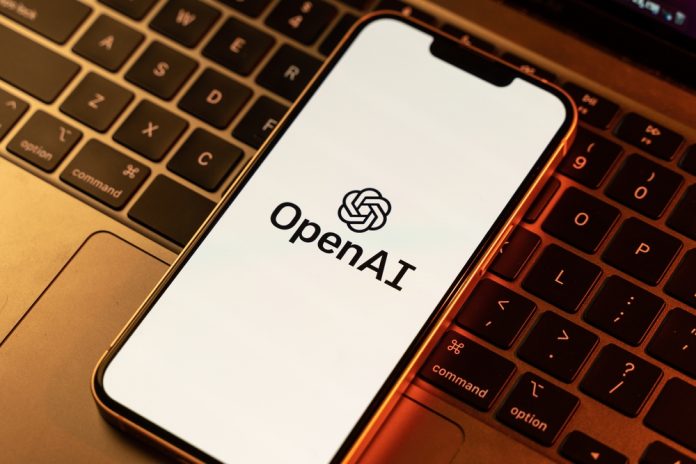
AI integration has proven to be able to reshape entire sectors, much like how OpenAI’s partnerships with Apple, Microsoft, and others could redefine the AI landscape. But as OpenAI shifts to a for-profit model, there are significant repercussions to be considered given their partnerships with these tech giants.
Given OpenAI’s partnership with Apple, particularly integrating ChatGPT into iOS 18, OpenAI has unprecedented access to the consumer market. Additionally, Microsoft’s deep investment in OpenAI carries higher stakes for Microsoft’s long-term positioning in the AI space, given the shift OpenAI is making. Finally, potential interactions with rivals like Google and Amazon could introduce conflicts and/or regulatory challenges down the road, though no formal equity ties have been disclosed.
These components create questions surrounding OpenAI’s shift towards a for-profit model. Let’s dive in
Open AI’s Integrations
A critical component of this shift is OpenAI’s deepening relationship with Apple. Through their integration of ChatGPT into iOS 18, OpenAI gains access to Apple’s vast consumer base, positioning its AI tools directly in the hands of millions of iPhone users. This partnership allows Apple to strengthen its AI capabilities while offering OpenAI a significant distribution channel that rivals Google Assistant and Amazon Alexa. For OpenAI, this collaboration could mean a foothold in everyday applications and a steady revenue stream tied to consumer interactions. However, it also raises questions about data privacy and how Apple, known for its strict privacy stance, will balance the new influx of AI data with its established policies.
Apple’s collaboration with OpenAI is not the only significant partnership that deserves attention. Microsoft’s investment in OpenAI has become central to its broader AI strategy. With Microsoft embedding OpenAI’s technology into its own products—like Azure OpenAI Services and Copilot in Microsoft Office—its success is increasingly intertwined with OpenAI’s growth. As OpenAI shifts to a profit-driven model, Microsoft’s stakes are raised in several ways.
The relationship is mutually beneficial: Microsoft leverages OpenAI’s cutting-edge capabilities to maintain competitiveness against rivals like Google in the productivity space. OpenAI gains a robust cloud infrastructure and enterprise reach through Microsoft’s services. Yet, this dependency could become a double-edged sword. Microsoft’s close ties to OpenAI might create friction in other partnerships, especially with companies that compete with OpenAI’s offerings. Moreover, the potential for regulatory scrutiny grows as both companies expand their influence over the AI market, which could prompt investigations into market monopolization or antitrust concerns.
OpenAI’s shift to a for-profit model also complicates its equity relationships with tech giants like Google and Amazon, each with a vested interest in AI. Though not as publicly pronounced as Microsoft’s, Google’s involvement remains crucial. As an AI research and development leader, Google’s interests could clash with OpenAI’s more direct profit motives. This shift could potentially turn allies into competitors, especially as both companies vie for leadership in key areas like generative AI and large language models.
Amazon, on the other hand, offers another layer of complexity. The company has built a strong foundation in AI through its Amazon Web Services (AWS) and Alexa products. OpenAI’s decision to pursue profitability could lead to a scenario where Amazon views OpenAI’s growth as a threat to its own AI and cloud offerings. While the companies have maintained cordial relationships thus far, this shift could push Amazon to accelerate its investments in rival AI models or seek tighter partnerships with alternative AI providers.
The intricate web of relationships between OpenAI and these tech giants creates potential for conflict. With Apple, Microsoft, Google, and Amazon all having a stake in OpenAI’s trajectory, each with their strategic priorities, there is an increased risk of clashing interests. For example, Apple’s focus on consumer privacy might not always align with OpenAI’s data-hungry models. Microsoft’s enterprise focus could diverge from Apple’s consumer-centric approach, leading to potential competitive tensions. Meanwhile, as direct rivals to Microsoft in both AI and cloud services, Google and Amazon may find themselves in a precarious position as OpenAI’s competitive posture becomes more pronounced.
OpenAI’s transition to a for-profit structure could invite greater regulatory oversight. The company’s partnerships with these tech behemoths put it in a position of significant market influence, which can attract scrutiny from government bodies concerned with fair competition. As AI becomes more integrated into daily life, regulators will likely examine the impact of these partnerships on consumer choice, market competition, and data privacy. OpenAI’s rapid expansion and partnerships with market leaders could potentially lead to antitrust challenges, especially if competitors or consumer advocacy groups argue that such alliances create an unfair playing field.
Beyond the corporate and regulatory dynamics, OpenAI’s shift also has implications for the broader AI ecosystem. The move toward profitability could impact the culture and direction of AI research. As a non-profit, OpenAI prioritized research transparency and the open dissemination of its findings, contributing to the collective progress of the AI field. However, a profit-driven focus might shift priorities towards proprietary developments and monetizable products, potentially creating friction with the academic and open-source AI communities.
This tension between open research and proprietary advancements raises critical questions about the future of AI development. Will OpenAI’s shift incentivize breakthroughs prioritizing commercial applications over long-term, exploratory research? And how will this change influence other AI labs that have traditionally looked to OpenAI as a standard-bearer for open science?
Furthermore, OpenAI’s emphasis on profit could trickle down to the next wave of AI startups. Startups may feel pressure to align themselves with larger players, sacrificing independence for strategic partnerships with established companies like Microsoft or Google. This could limit the diversity of thought and innovation in the AI space, as smaller companies align with the interests of their more powerful partners to secure funding and market access.
In summary, OpenAI’s transition to a for-profit model has triggered a cascade of changes throughout the tech industry. Its deepening ties with Apple, significant reliance on Microsoft, and complex relationships with Google and Amazon shape a new era for AI. This shift raises essential questions about competition, regulatory oversight, and the direction of AI research. The outcome will shape the trajectory of OpenAI and influence the future of the AI industry. While the full impact of these changes remains uncertain, one thing is clear: OpenAI’s move toward profitability is a pivotal moment in the evolution of artificial intelligence, with far-reaching consequences for technology, business, and society.




